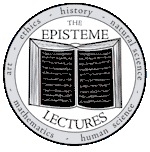I had the opportunity to ask Dr. Freiman between her afternoon and evening lectures a question quite relavant to TOK. I asked, "How do you in your role as a curator decide what is important art? In particular, how did you determine which artists to invite into the 100 Acres project.
Before I share what her responses were...and she may share herself, since I have sent her an invitation to our blog...I want to hear from you. What ways of knowing do you think a curator would employ in making such decisions?
Friday, March 20, 2009
Subscribe to:
Post Comments (Atom)



1 comment:
A curator must find the "best" art work by taking in consideration of all people's tastes. A well balanced collection is what makes a museum fascinating. While not everyone needs to agree that they love a certain piece, they can accept and respect that certain art as it may reflect other people's tastes. I was very rigid in what art I liked. After a year and half of AP art, I am proud to say that my horizons have broadened. There is such a wide variety of artists in my AP art class. I've seen what hard work it takes to make abstract art. Although I may not love all pieces of art, I appreciate so much more now. This summer, I went into an art gallery with my mom, and started telling her how I liked a certain painting. She was surprised, as I had not previously been attracted to abstract art. A curator uses both their knowledge from an educational perspective, as well as their personal experiences to create a well balance display. I think it would also be important for a curator to find something different for his or her particular audience. Although we live in Indiana, the Asian exhibit at the IMA is still fascinating. It is another way for people to learn about a certain culture. Some people would learn best from a movie, other's reading books, but for some it may be art. There may be an aspect in art that has a deeper meaning and translates better to someone than reading facts.
Post a Comment